How to Unclog a Drain With Salt - 4 Easy Methods
Author: Anne Cowart | Editor: Omar Alonso
Review & Research: Jen Worst & Chris Miller
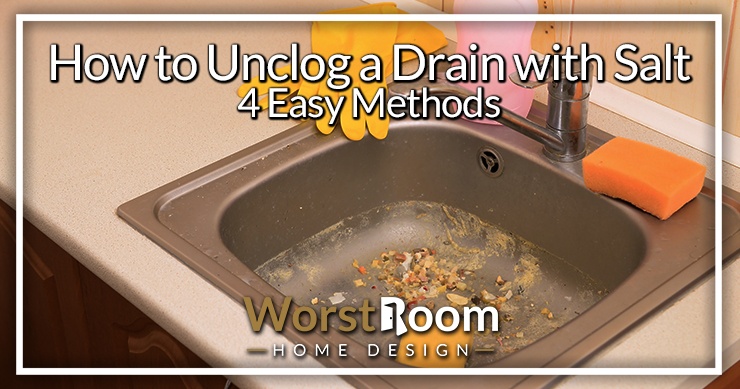
One of the more typical household problems is a drain that becomes clogged. Seeing water build up next to a drain is frustrating. However, you may use common home products like salt to fix the problem, saving you the expense of hiring a plumber. Yes, you can unclog a drain with salt.
Learn why salt is such a powerful declogger and what other common household products you can use in conjunction with it to keep your pipes clear and running smoothly.
How Clogs Form
Accumulated sediment and debris washed down the drain is the primary cause of drain obstructions. Using too much soap or losing too many hairs when shaving are two common causes of bathroom-blocked drains.
It's also possible for kitchen drains to become a dumping ground for discarded food. Grease and food particles build up inside your pipes and prevent water from draining freely. Toilets can become so clogged that nothing seems to work.
When the drain is obstructed, the water can't drain out, backing it up. When this happens, you may notice a foul smell coming from your sink or toilet. The longer the clog remains in place, the worse it will smell and the harder it will be to remove.
Why Salt Works as a Cleaner
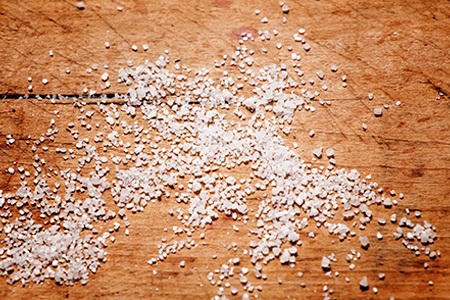
How does salt unclog drains? There are several reasons why regular table salt makes an effective cleaner. Here are three of them:
Salt as a Dehydrating Agent
Sodium chloride is most useful as a microbiological inhibitor, which prevents germs' growth as a consequence of dehydration. Due to its drying effects on bacterial cells, salt can kill many germs.
Salt as an Abrasive
Anyone who has seen salt up close knows it is composed of tiny crystals. Each grain of salt has a sharp edge that you may use to scrape away stains, pieces of food, nasty deposits, and other residues, much like sandpaper.
We already put salt on our food, so it makes sense to use it in kitchens and other areas where food is prepared and handled.
Salt as a Chemical Compound
Dissolving salt in an acid such as white vinegar or lemon juice releases sodium and chlorine ions, which may spark vigorous chemical reactions. It works to remove the sludge, too, that the tiny black drain fly worms feed on as well.
Chemical reactions are enhanced by increasing solution concentration. Because of this, you may use salt, lemon juice, or vinegar to remove tough stains from your kitchen countertops or clear drains.
Table Salt vs. Epsom Salt
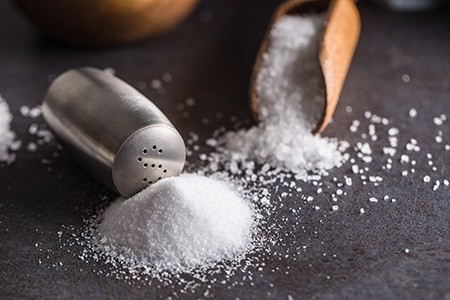
NaCl, or common salt, is a compound of sodium and chlorine. However, Epsom salt comes from a magnesium sulfate mineral found in nature called epsomite, which consists of magnesium, sulfur, and oxygen. Magnesium sulfate crystallizes much like table salt, but it is not a true salt.
In the following methods, we recommend table salt for every application except the last one, where Epsom salt is used. Not only can salt unclog a drain but you can take a relaxing bath with some types and improve your meals with others!
How to Unclog a Drain With Salt
After collecting your table salt, measuring cups, and additional additives like baking soda, white vinegar, and Epsom salt, you're ready to tackle that pesky slow drain.
Use the following methods to unclog a drain with salt.
Method 1: Hot Water & Salt
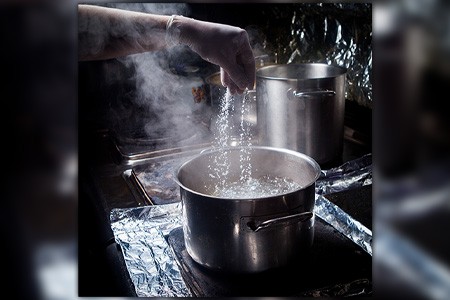
As a first step, combine equal parts of salt and hot water. Slowly pour the heated solution down the drain after preheating it just below the boiling point.
If the drain doesn't clear on the first try, mix another batch of salt and hot water. Once the clog clears, conclude by pouring cool water down the drain.
Increase the water temperature for better results if your pipes are made of metal. But remember that boiling water can weaken or melt the PVC joints, producing a leak. If your plumbing is made of PVC pipes, keep the water's temperature below 140 °F (60 °C).
Slowly and carefully pour the salt water combination down the drain, or you risk scorching yourself. Does salt and boiling water unclog drains? Yes, but you shouldn't make the water that hot, for your own safety and to not damage your plumbing.
If the salt and water solution doesn't work, you may try combining salt with other common home products to clear even the toughest blockages. Feel free to gently try to dislodge the clog after every attempt using any types of toilet plungers.
Method 2: White Vinegar & Salt
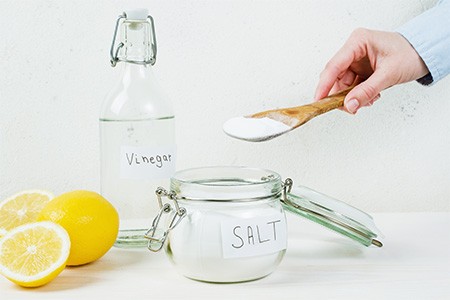
Try using vinegar to clear a drain blockage. Sodium acetate and hydrogen chloride are formed when salt is dissolved in vinegar, resulting in a powerful chemical reaction that may remove a great deal of waste. You can enjoy the benefits of both an abrasive and a cleaning by mixing salt and vinegar.
A mixture of salt and vinegar, 1 cup salt to 1 cup vinegar, can be used to clear clogs. It's crucial to keep swirling the mixture until the ingredients are combined evenly.
If you want to increase the efficacy of the combination to use it as a drain cleaner, add half a cup of lemon juice. If you don't have any lemon juice on hand, you may substitute vinegar for the acidity it adds and use it to make the mixture more liquid so you can pour it down the drain.
Pour the mixture down the drain and let it sit for 15-30 minutes. It's crucial to use enough so the blockage can soak up the mixture.
The last step is to pour 4 cups of hot water down the drain. Don't let water drain down the sink's basin since this will cause the water temperature to drop. The water must be as hot as possible to remove residue efficiently without boiling.
Once again, if your pipes are metal, you may use boiling water, but if they are PVC, you should use water that is no hotter than 140 degrees Fahrenheit.
Method 3: Baking Soda & Salt
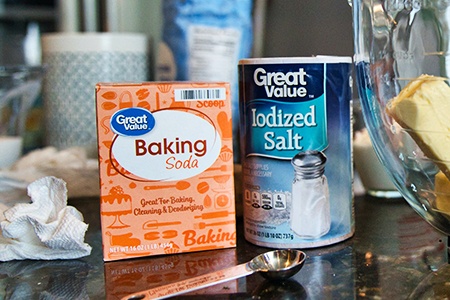
A more effective method of unclogging a drain is to use a combination of salt and baking soda. This even works on hair, though you should not flush hair down the toilet or sink. As a moderate alkali that may dissolve grime and oil in water, baking soda is a great cleaning agent.
You may make a potent decongestant using only 1 cup of baking soda and 1/2 cup of salt. At this concentration, it ought to be able to dissolve the clog from any types of toilets or sinks and cut its way through the drain.
The next step is to pour the solution down the drain and wait for two to three hours. Allow both salt and baking soda to completely dissolve the muck before proceeding.
After waiting a few hours, flush the drain with hot water to examine whether the obstruction has been removed. If any residue from the salt and baking soda solution remains, you can easily wash it away with hot water.
Method 4: Epsom Salt
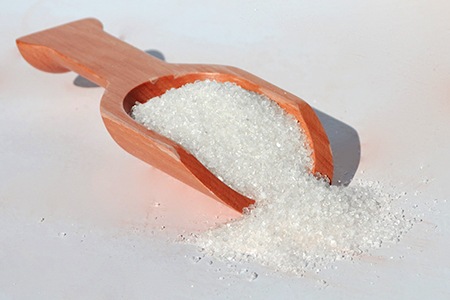
Epsom salt, commonly used as a skin softener and pain reliever, may also clear clogged pipes. Epsom salt, or magnesium sulfate, is a chemical substance consisting of magnesium, sulfur, and oxygen, making it very distinct from regular table salt.
Epsom salt is ideal for unclogging drains due to its gritty texture and slow dissolution in water. Its composition causes a chemical reaction, turning it fizzy and soapy, making it an excellent declogger.
When unclogging a drain using Epsom salt, pour hot water into the drain to loosen debris. Put in 2 tablespoons of Epsom salt and pour in more hot water.
Wait several minutes before pouring additional water down the drain to flush it out. You'll have to do this many times until the obstruction clears.
Considerations When Using Salt to Clear Drains
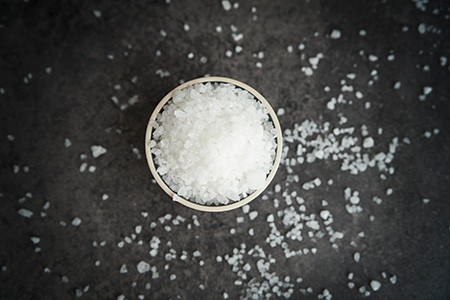
Although table salt is inexpensive, easy to find in any home, and works well to clean pipes, especially when combined with an acid, there are some downsides to using salt for drain clogs.
Corrosive on Drains
The corrosive nature of salt can cause problems for plumbing systems that still employ metal pipes. However, metal pipes survive higher temperatures than plastic pipes.
When you clean a drain with salt, you can increase the heat of your water without adding more salt to flush out drains. This helps to keep the salt moving on by fully dissolving it.
Heat Melts Pipes
Conversely, if the pipes in your house are mostly PVC, hot water might melt or harm them if the temperature rises beyond 140 degrees Fahrenheit.
But PVC is naturally resistant to salt corrosion, so you can increase the salt content when cleaning this type of pipe.
That's How to Unclog a Drain With Salt
Anyone who has ever had a clogged drain knows how frustrating it can be. Fortunately, you may use common home items like salt to dissolve obstructions. Does salt unclog drains? Why, yes, it does!
It's comforting to know that there are simple and inexpensive solutions to deal with a clog, such as using table salt or Epsom salt, before needing to hire a plumber. Unclog your drain with salt using the information above and you'll be on your way in no time.




